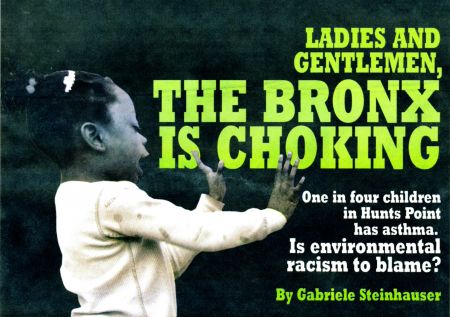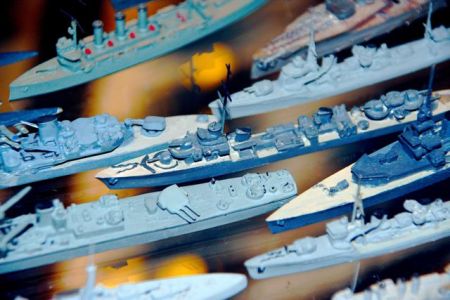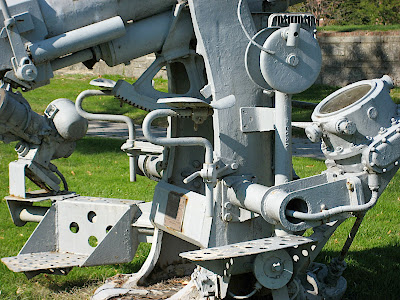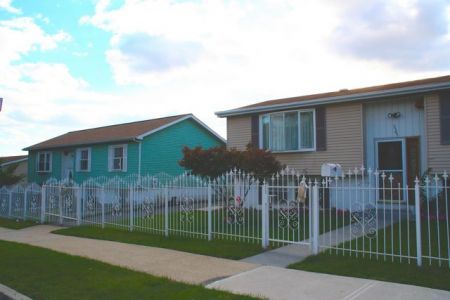 A great tool to find and contribute NYC cultural destinations. Add your own local favorite or explore other ‘hoods with WNYC Soundcheck’s Noteworthy New York.
A great tool to find and contribute NYC cultural destinations. Add your own local favorite or explore other ‘hoods with WNYC Soundcheck’s Noteworthy New York.
Bronx
Elutriate! Vaticinate!
Portrait of an Artist During the Morning Commute
In the age of multitasking it only makes sense that Artist’s would take to the streets and try to fit in their passions along with their duties… http://youtube.com/watch?v=5X52D-XIp3o
Nosogeography: Too Many Children in the Bronx Have Asthma
I found this free newspaper on the seat of the subway. With nosogeography (the connection btwn disease and geography) in mind, I couldn’t stop wondering why one borough of this city is punished so much more harshly than another by our environmental condition. In this hard-hitting piece, journalist Gabriele Steinhauser tells us about the disposal of waste in the South Bronx and its horrific effects on the daily lives of adults and children.
Georgic: Watering can
In early spring-tide, when the icy drip
Melts from the mountains hoar, and Zephyr’s breath
Unbinds the crumbling clod, even then ’tis time…
Spring is back. Upstate is melting.
During spring break I went on a delightful hike with my family and friends, along the Ashokan Reservoir. The reservoir, like others in the area, was created in the early 1900s, I learned. It flooded the town of Ashokan and surrounding farms, to quench the thirst of the big city, downstate.
Home from the hike, looking at the photos taken that walk among as of yet leafless trees, frost and thaw, I feel the need to learn more about this watering can of the five boroughs.
My Brooklyn window looks out on a budding magnolia, and I know the garden hoses around town are starting to be unfurled by the thousands, as I write this.
Open City: Small boats in defense of a very large city.
Open City: Fort Shuyler, The Bronx
Maritime Industry Museum at Fort Shuyler >>
“A walk through the Maritime Industry Museum at Fort Schuyler brings with it a vivid presence of seafaring in both bygone years as well as today’s present era. The exquisitely fashioned ship models, historic artifacts, nautical photographs and prints, and the host of corporate banners identifying exhibits of the respective steamship companies they represent gives the visitor a true sense of being at sea with those individuals who experienced life in the merchant marine or passenger cruise line industry.”
— SUNY Maritime College | http://www.sunymaritime.edu
Vaticinate: Charlotte Street, the Bronx
In 1976, Charlotte Street epitomized the decay and destruction of the South Bronx. President Jimmy Carter witnessed cement rubble on the devastated street and pronounced the need for grand changes that would transform the lives of poor people in the neighborhood and beyond. Rather than living in large, public housing, families needed homes of their own. Carter, along with other earnest city planners, were trying to vaticinate somehow, to imagine city life that would take on the pleasures that would come with a sense of ownership in a single family home.
More than thirty years later, Susan Agliata and I seek out this architectural anomaly in the heart of the Bronx. Charlotte Street is a street of modest but well-cared-for single and double story homes. Each home is surrounded by a six foot high fence and every window is barred. Unlike the rest of the borough which is bustling and croweded on a lovely fall afternoon, Charlotte feels simultaneously inhabited and desolate.
PELAGIC: City Island, Bronx
 There is a French word I dearly relish for its ability to express the sensation one has when feeling outside your home, your country, yourself. The word is “depayser” and literally speaking it translates as “to be outside one’s country”, experiencing a new state of mind and body, which has certainly been a part of my year of discovery here in New York City. I am constantly reminded of my often parochial attitude toward unfamiliar territory when I allow myself to discover a new place or community here in my own town.
There is a French word I dearly relish for its ability to express the sensation one has when feeling outside your home, your country, yourself. The word is “depayser” and literally speaking it translates as “to be outside one’s country”, experiencing a new state of mind and body, which has certainly been a part of my year of discovery here in New York City. I am constantly reminded of my often parochial attitude toward unfamiliar territory when I allow myself to discover a new place or community here in my own town.
So once again, I am in a position of awe, this time as I stand surrounded by a giddy flock of seagulls on the City Island Waterfront at the north –eastern most tip of the Bronx. The air is, sadly enough, unseasonably warm (an expression I have come to fear). Bronx native and Abecedarium media artist George Kuchar encouraged Susan and I to drive to this far most finger of the metropolitan area in pursuit of the quintessential pelagic experience. I stare long and hard at the horizon, at the waters of the Pelham Bay, the Long Island Sound and the Eastchester Bay, utterly transported by a sensation of openness. I am here and there all at once. One of my favorite scenes in Betty Smith’s A Tree Grows in Brooklyn occurs when Francie, the 11 year old heroine, is taken by her father to the shore to ride in a small fishing boat, smell the salt, gaze at the gulls. For the first time in her life, she has a pelagic sensation of the sea.
Open City: Fort Schuyler, The Bronx
My understanding of open city is that it is a military designation that creates a hallow of protection over an urban setting. All of its defenses have been abandoned, and a kind of diplomatic trust ensues. Having lived through the initial shock and the harrowing aftereffects of September 11, 2001, I was wondering how it would feel to visit a perfectly preserved Civil War fort situated at the mouth of the East River to “protect and defend” the people of New York City. Fort Schuyler is a remarkably picturesque and serene enclave that is perched on the tip of a finger of land that juts into the water. Surrounded by the White Stone and the Throgs Neck Bridges, the fort would seem to have a more prominent place in the city’s consciousness. Instead, we felt as if our drive across this narrow piece of land was taking us to a remote island way off the coast and into the Atlantic Ocean.





